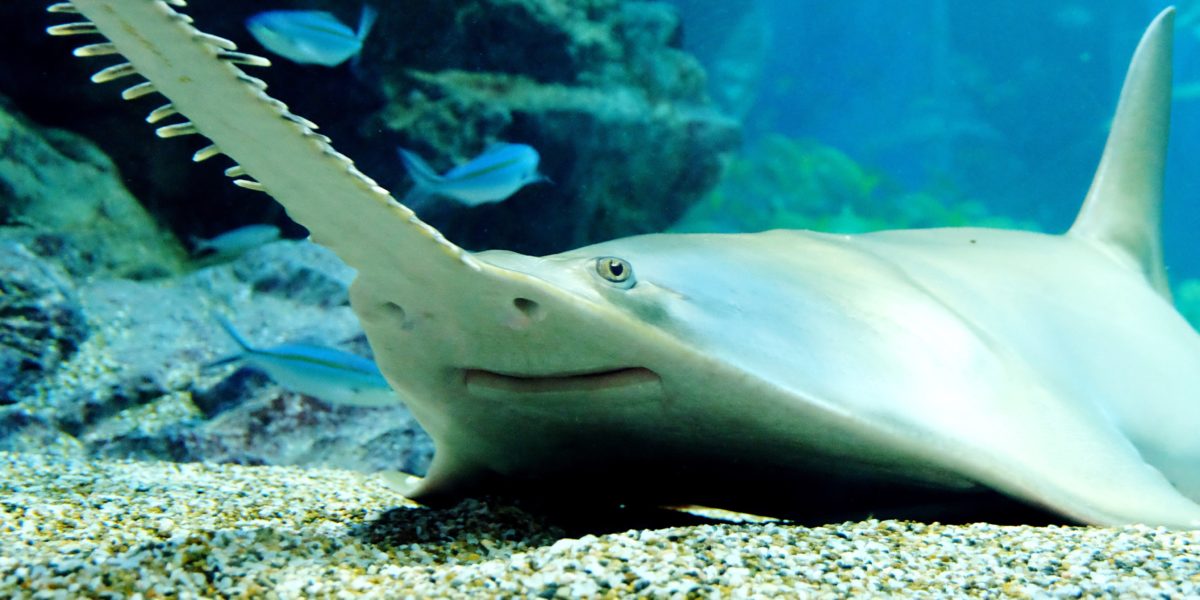This “scary” giant creature is actually super gentle: The Sawfish
In the depths of the world’s oceans and coastal waters, a creature lurks that can strike fear into the hearts of those who encounter it. Known as the sawfish, this enigmatic and ancient species has long been misunderstood and feared due to its intimidating appearance. However, beneath its menacing exterior lies a gentle giant, a creature that deserves our attention and protection.
The sawfish gets its name from its most distinctive feature—a long, flattened rostrum (snout) covered in tooth-like serrations, resembling a saw blade. This unique adaptation has led to its fearsome reputation, as it can grow up to several feet in length, making it appear as though it wields a formidable weapon. In reality, the sawfish uses this rostrum not for aggressive purposes but as a versatile tool for hunting and self-defense.
Contrary to its menacing appearance, the sawfish is an incredibly gentle and docile creature. It is a type of ray and belongs to the elasmobranch family, which includes sharks and rays. These animals are typically slow-moving and spend much of their time resting on the ocean floor, camouflaging themselves against predators.
Sawfish are primarily found in warm, tropical waters around the world, inhabiting a variety of environments, including estuaries, coastal waters, and river systems. They are well-adapted to both saltwater and freshwater, making them unique among elasmobranchs.
Sawfish are not the menacing predators they might appear to be. Their diet consists mainly of small fish and invertebrates, which they capture by sweeping their rostrum from side to side. The sawfish’s specialized snout allows it to stun or impale its prey, making hunting more efficient. They are not a threat to humans, as they do not actively seek out large prey.
The reproductive behavior of sawfish is another fascinating aspect of their lives. Unlike most fish, sawfish give birth to live young rather than laying eggs. They are ovoviviparous, meaning the embryos develop inside the mother’s body, and she eventually gives birth to fully formed pups. This reproductive strategy is thought to be an adaptation to protect the vulnerable young sawfish from predators.
Despite their gentle nature, sawfish populations face significant threats from human activities. Overfishing, habitat degradation, and accidental entanglement in fishing gear are among the primary factors driving their decline. Several species of sawfish are classified as critically endangered or endangered, highlighting the urgent need for conservation efforts.
Conservation organizations and researchers are working tirelessly to raise awareness and implement protective measures to save sawfish populations. Initiatives include stricter fishing regulations, habitat restoration, and community education programs to reduce human impact on these remarkable creatures.
The sawfish, often unfairly perceived as a frightening predator, is, in reality, a gentle giant of the oceans. Its unique adaptations and behavior make it a fascinating and valuable species in marine ecosystems. While they face numerous threats, ongoing conservation efforts offer hope for the future of sawfish populations. Recognizing their importance and understanding their true nature is essential in ensuring their survival for generations to come.
Hits: 15









